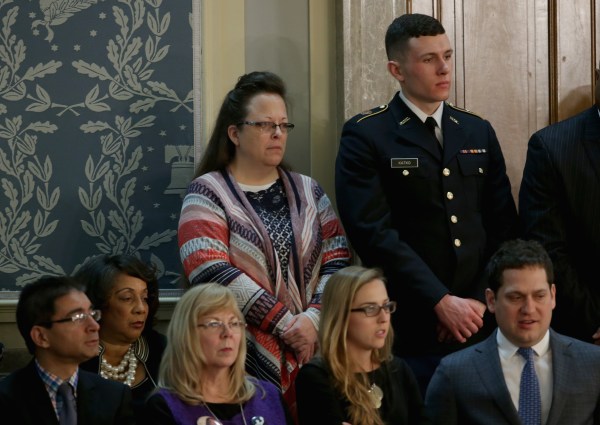Ohio Gov. Mike DeWine signed an executive order last week banning Ohio hospitals and health care facilities from performing gender reassignment surgeries on minors. The order came just a week after his veto of House Bill 68, which would have blocked minors from accessing a much broader range of gender transition services. But the Ohio House voted on Wednesday to override DeWine’s veto, with the Senate set to vote on January 24.
What did DeWine’s executive order ban?
DeWine’s executive order allowed the Ohio Department of Health to adopt emergency rules preventing anyone under the age of 18 from receiving gender-transition surgeries. Non-surgical transition procedures, including puberty blockers and cross-sex hormones, remain available to minors under the executive order. The executive order will expire in 120 days, or whenever permanent, non-emergency rules are enacted.
DeWine also announced a set of proposed rules that would require additional support and counseling for individuals seeking gender-related medical intervention, including a multidisciplinary care team, a “comprehensive care plan” requiring informed consent and understanding of the risks involved in treatment, and extensive mental health counseling. Health care providers would also be required to report de-identified data on patients suffering from gender dysphoria. The rules will be “discussed at length with legislators and interested parties” and would go into effect after a public comment period.
These restrictions are much more limited in scope than the ones contained in the bill—known as the SAFE Act—that DeWine vetoed the previous week but that could go into effect if the Ohio Senate votes to override DeWine’s veto. That bill, which passed with large majorities in both the Ohio House and Senate, would have banned both surgical and hormonal forms of gender-related medical treatment for minors. It would also have prevented transgender athletes identifying as female from competing on women’s sports teams in K-12 schools, colleges, and universities in Ohio.
Why did DeWine veto the original bill?
DeWine argued in his veto message that the SAFE Act’s restrictions on all forms of gender-related medical care violated the rights of parents to make informed medical decisions for their children. He said that his veto was about “protecting human life,” citing conversations with parents who claimed that their children would have committed suicide without access to medical transition services.
“Parents are making decisions about the most precious thing in their life, their child, and none of us should underestimate the gravity and the difficulty of those decisions,” DeWine said.
The veto sparked wide Republican backlash. Former President Donald Trump accused DeWine of having “fallen to the Radical Left,” and Ohio Sen. J.D. Vance wrote in a post on X that he was “extremely disappointed in the governor’s decision.”
“There are many things the law rightfully says that no one, including parents, may do to children,” Vance said.
DeWine stood by his decision at a press conference the following week, saying that he felt “just as firmly” about it as he had originally. His executive order and set of administrative rules were designed to address some of the goals of the SAFE Act, such as bans on surgery and protections against “fly-by-night” gender clinics, while leaving out the bill’s more restrictive provisions. He added in his veto message that he thought his approach would have a better chance of holding up in court.
His actions have been criticized by some for not going far enough. “What he’s trying to do is find a middle ground on an issue where there’s probably no middle ground,” Jon Schweppe, policy director for American Principles Project, which advocates for restrictions on gender-related medical procedures, told The Dispatch.
The Ohio House voted to override DeWine’s veto 65-28 on Wednesday, and the Senate will vote on whether to do so in two weeks.The bill originally passed 62-27 in the House and 24-8 in the Senate, meeting the three-fifths majority needed for an override in both chambers. Cases of veto overrides are relatively uncommon: Ohio legislators have succeeded in overturning only one of DeWine’s eight vetoes since he took office in 2019. The proposed administrative rules will remain regardless of the outcome of the Senate’s vote, according to DeWine.
How does Ohio reflect nationwide trends?
The fight over the SAFE Act in Ohio is part of a larger wave of restrictions on gender-related medical procedures and legal battles across the country. Twenty-three states currently ban some form of gender transition services for minors, according to the Movement Advancement Project, although several of the bans are permanently or temporarily blocked pending court challenges. The first three months of 2023 saw more such bills introduced than the previous six years combined, with 19 states imposing bans over the course of the year. Lawmakers in three states—Kentucky, Louisiana, and North Carolina—overrode vetoes by Democratic governors last year to pass them. The SAFE Act’s restrictions are similar to most states with these bans, the vast majority of which limit both medication and surgery for transgender-identifying youth. States like Missouri have also begun to place stricter regulations on transition procedures for adults in addition to minors.
“I’d say we saw the majority of states that will enact them, have enacted them,” Elana Redfield, federal policy director at the Williams Institute, told The Dispatch. “But also, there may be some refinements to the laws—we might see additional laws that complement these.”







Please note that we at The Dispatch hold ourselves, our work, and our commenters to a higher standard than other places on the internet. We welcome comments that foster genuine debate or discussion—including comments critical of us or our work—but responses that include ad hominem attacks on fellow Dispatch members or are intended to stoke fear and anger may be moderated.
With your membership, you only have the ability to comment on The Morning Dispatch articles. Consider upgrading to join the conversation everywhere.